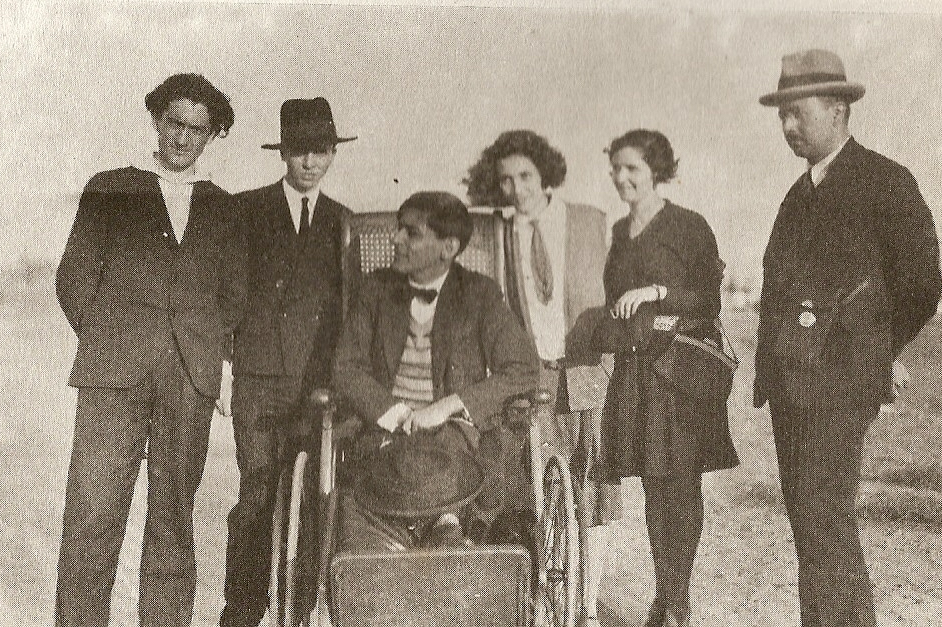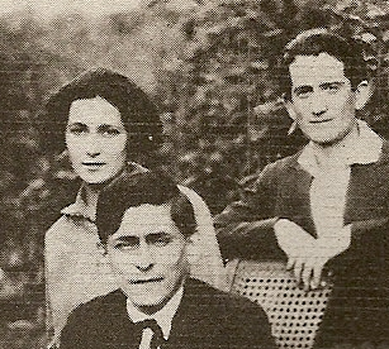Mariátegui and the Peruvian Jewish Radicals
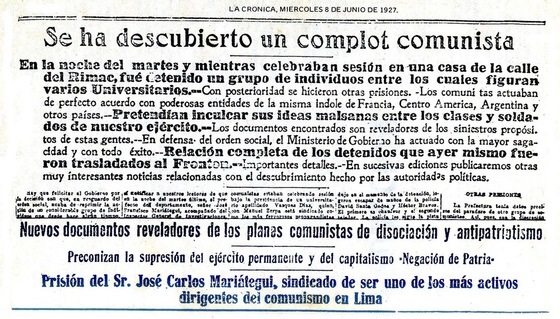
José Carlos Mariátegui was not Jewish, but was the leader of a group of Peruvian leftists that included many Jews. He was one of the most influential Latin American socialists of the 20th century. He insisted that socialism had to evolve organically in Latin America, based on local conditions, rather than mechanically applying European models. In 1923 he returned from three years of travel in Europe and began teaching at the People's University, along with many other young Peruvian radicals.
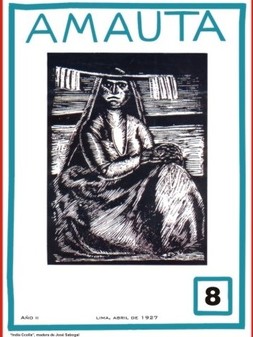
In 1926 he established the journal Amauta, an important forum for discussing socialism, art and culture in Latin America. In 1928 he founded the Peruvian Socialist Party which later became the Communist Party of Peru, and published his most important work, Seven Interpretive Essays on the Peruvian Reality. A large proportion of Mariátegui's closest followers were young Jewish radicals, mostly from immigrant Ashkenazi families. Mariátegui lived in "Little Rumania" a Jewish neighborhood of Lima. (In November, 1929 the Leguía dictatorship arrested 180 people, citing a supposed Jewish plot.) Mariátegui knew many socialist Jews, and followed international Jewish issues. He had ties to US novelist Waldo Frank and prominent Argentinian literary editor Samuel Glusberg. Many young Jewish radicals of his generation worked closely with Mariátegui and were greatly inspired by his thinking. Some of their biographies follow.
Bernardo Regman

According to the Communist Party of Peru, Regman was a Rumanian Jew who arrived in Peru following WWI. In a 1929 letter to Mariátegui, Colombian labor organizer Antonio Caballero Cabarcas writes about meeting Regman and discussing the significance of Mariátegui's writing. As a traveling peddler, Regman was able to travel freely all over Lima, into the interior of Peru, and beyond.
José Ivan Lerner

Part of Mariátegui's circle and a personal friend who frequently visited his home.
Noemí Millstein & Miguel Adler

Naomi Millstein and Miguel Adler edited the journal Repertorio Hebreo and translated articles from German and Russian for the journal Amauta. They were close friends of Mariátegui's and visited him often at his home.
Jacobo Hurwitz (Peru, México, Nicaragua, Cuba) (1901-1973)
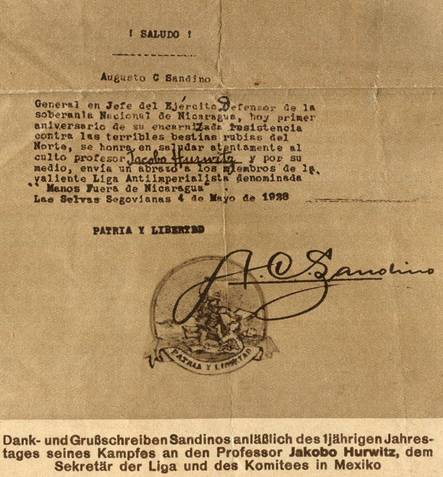
Letter of commendation from Sandino.
Jacobo Hurwitz was born in Lima, Peru of German Jewish immigrant parents who met and married there. His father had fought with the Union army in the US Civil War and arrived in Lima in the 1870s, becoming a leader of the Jewish community there. Jacobo started college in 1918, where he pursued his interest in poetry, and became involved in the student movement for educational reform, the battle for the eight hour day and for divorce. In 1920 he met communist leader José Carlos Mariátegui, who greatly influenced his political thinking. Along with many other young activists, he was deported in 1924, shortly after the publication of his only book of poetry, De la fuente del silencio. After a brief stay in Panama, he went to Cuba, where he stayed with, and became a close friend of Cuban communist Julio Mella, and worked on several publications edited by Cuban, Venezuelan and Peruvian activists. In 1927 he was a signer of the manifesto Our Protest, written by communist intellectuals in response to the increasingly repressive Machado regime, and as a result of his activism, he was once more exiled, this time to Mexico.
In Mexico he joined a group of Peruvian political exiles working to overthrow the dictatorship of Leguía. One of them, Haya de la Torre, had founded the Alianza Popular Revolucionaria Americana (ARPA) in 1924. But Haya de la Torre's domination of ARPA, the sectarian division this fostered, and Hurwitz' increasing commitment to communism, led to a rupture with ARPA. Soon after his break with ARPA, Hurwitz became the secretary general of the Hands Off Nicaragua Committee (MAFUENIC) under the direction of the Anti-Imperialist League of the Americas and with direct support of the Comintern (Communist International.) The committee sent medical supplies and military equipment to Augusto Sandino's army.
In 1928 he married his lifelong partner, photographer and teacher Marsha Oynick, the daughter of Polish Bund leaders who had migrated to Mexico in 1926. During this period he was involved in organizing efforts in Panama, and in El Salvador, where he helped prepare for the insurrection of 1932. A wave of anti-communist repression forced him into hiding, and in 1932 he was imprisoned. After his release, later that year, he carried out various tasks for the communist movement, returning to Peru by way of Central America, Colombia, and Ecuador, but soon left for Chile. Finally returning to Peru in 1941, he was once more expelled the following year and sought asylum in Mexico, where his two children were born. In 1957 he was able to return to Peru, although he spent several months in jail for his political activities. He worked as a correspondent for the Soviet news agency TASS, and helped form the Peruvian Movement for Peace, which he led throughout the 1960s and represented at the 1969 World Congress for Peace in New Delhi, traveling on to visit the USSR and China. He continued to be politically active until his death in a car accident in 1973.
In Mexico he joined a group of Peruvian political exiles working to overthrow the dictatorship of Leguía. One of them, Haya de la Torre, had founded the Alianza Popular Revolucionaria Americana (ARPA) in 1924. But Haya de la Torre's domination of ARPA, the sectarian division this fostered, and Hurwitz' increasing commitment to communism, led to a rupture with ARPA. Soon after his break with ARPA, Hurwitz became the secretary general of the Hands Off Nicaragua Committee (MAFUENIC) under the direction of the Anti-Imperialist League of the Americas and with direct support of the Comintern (Communist International.) The committee sent medical supplies and military equipment to Augusto Sandino's army.
In 1928 he married his lifelong partner, photographer and teacher Marsha Oynick, the daughter of Polish Bund leaders who had migrated to Mexico in 1926. During this period he was involved in organizing efforts in Panama, and in El Salvador, where he helped prepare for the insurrection of 1932. A wave of anti-communist repression forced him into hiding, and in 1932 he was imprisoned. After his release, later that year, he carried out various tasks for the communist movement, returning to Peru by way of Central America, Colombia, and Ecuador, but soon left for Chile. Finally returning to Peru in 1941, he was once more expelled the following year and sought asylum in Mexico, where his two children were born. In 1957 he was able to return to Peru, although he spent several months in jail for his political activities. He worked as a correspondent for the Soviet news agency TASS, and helped form the Peruvian Movement for Peace, which he led throughout the 1960s and represented at the 1969 World Congress for Peace in New Delhi, traveling on to visit the USSR and China. He continued to be politically active until his death in a car accident in 1973.
